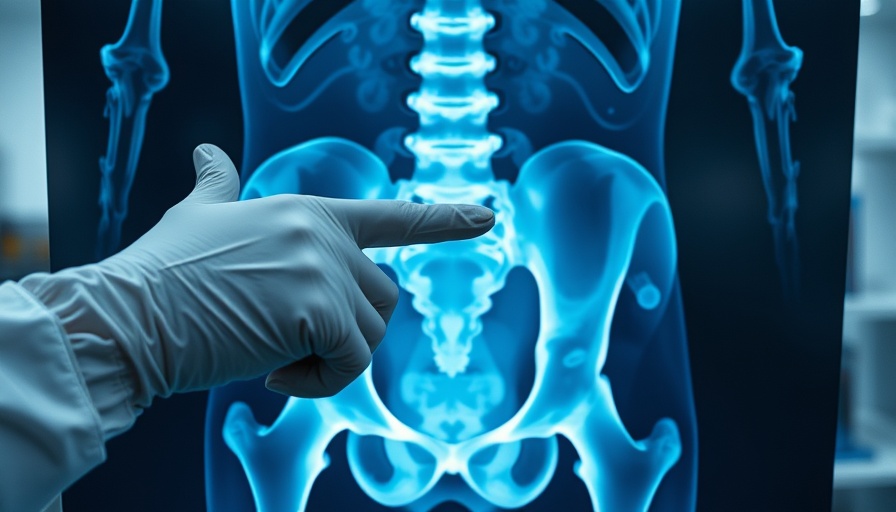
Understanding Motorcycle Pelvic Injuries: More Than Meets the Eye
Riding a motorcycle comes with its own set of risks, one being the significant threat of pelvic injuries. This part of the body is often a silent victim during a crash, yet its implications can be far-reaching. The pelvis, being the body's strongest structure, can endure substantial forces before succumbing to injury. However, when it does break, it can lead to complex challenges as the pelvis is interconnected with various vital organs and systems.
The Intricacies of Pelvic Anatomy
The pelvis is not just a single bone; it is a complex structure made up of several components. Comprised of two sides and a middle segment, its architecture includes the Ilium, Pubis, and Ischium, with vital connections at the Sacrum—the tailbone we’ve all heard of. Imagine it as a ring; injuries can occur anywhere around this circle. Common scenarios include the separation of the Ilium from the Sacrum or fractures that may necessitate surgical intervention to restore normal function. In the event of an injury, repair procedures typically involve the use of screws or plates to stabilize the bones, often resulting in permanent loss of motion at the joint.
The Perils of Open Book Fractures
One of the gravest types of pelvic injuries is known as the Open Book Fracture. This isn’t just a catchy name; it hints at the significant danger of such injuries. Picture opening a book too wide, causing the binding to fail. This is akin to what happens in the pelvis: the Ilium can separate dangerously at the bottom, often accompanied by a fracture at the SI joint. These types of fractures can result in serious complications like internal bleeding, nerve, and bladder damage, or even injuries to the reproductive organs. Unfortunately, the risk of death is notably higher with these unstable fractures, given their potential for causing significant vascular damage.
A Closer Look at Associated Injuries
Pelvic injuries don’t often occur in isolation. They frequently come with femoral head fractures or damage to the hip joint. The powerful forces that break the pelvis can often have a double impact, leading to injuries across interconnected bone structures. This interconnectedness makes immediate diagnosis and treatment crucial, as overlooking a related injury could complicate recovery significantly.
Classifying Pelvic Injuries: The Importance of Understanding
Pelvic injuries can be classified based on the direction of impact and whether they are stable or unstable. While it may sound overly technical, understanding these classifications can lead to better outcomes for patients. Stable fractures, for instance, might allow for a simpler treatment approach, whereas unstable fractures necessitate intensive intervention due to their higher mortality risk.
The Journey of Repair: What to Expect
Repairing pelvic injuries varies significantly between individuals based on the type and location of the fracture. For some, internal fixation with plates and screws might suffice, while others may face more complex surgical options, such as external fixators—or cages surrounding the pelvis, bolted with pins for stabilization. Each of these procedures will be tailored to the patient's unique injuries, and rehabilitation will often follow to aid recovery.
What Vehicle Owners and Personal Injury Lawyers Should Know
For personal injury lawyers and motorcycle owners alike, understanding pelvic injuries is critical. These injuries can present unique challenges in legal scenarios, primarily due to their complicated nature and significant medical implications. Therefore, emphasizing the gravity of pelvic injuries can aid legal discussions around motorcycle accidents. Not only is this knowledge valuable for legal cases, but it also encourages motorcycle owners to prioritize safety gear designed to mitigate injury impact.
Encouraging Further Action and Safety Measures
Armed with the knowledge of pelvic injuries, motorcycle owners must consider additional measures to improve safety. From wearing advanced protective gear to completing safety courses, each action can play a role in reducing injury severity. Personal injury lawyers should advocate for improved standards in motorcycle safety, ensuring that victims receive the compensation they need to recover fully.
In conclusion, motorcycle pelvic injuries, while often overlooked, are a significant concern. Understanding these injuries—ranging from complex anatomical structures to the grave consequences of fractures—underscores the importance of both safety measures and legal awareness.
 Add Row
Add Row  Add
Add 




Write A Comment